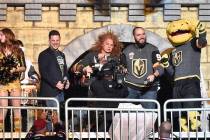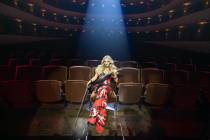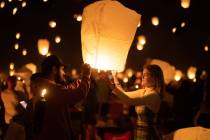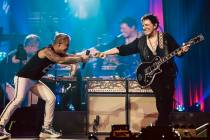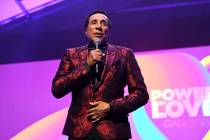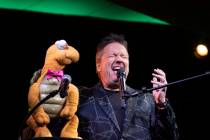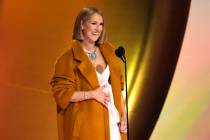Conductor helps make full meal of Philharmonic’s lighter fare
Aaron Copland got the most playing time in Saturday's Philharmonic concert, but Leonard Bernstein and Samuel Barber tied for the gold medal, with Charles Ives a close third.
The whole evening was held together - masterfully - by guest conductor Case Scaglione, the third of nine guests to lead the orchestra this season.
The program began with Copland's ubiquitous "Fanfare for the Common Man."
Is there anyone alive who hasn't heard at least part of that piece? No matter.
One can hear it a hundred times and still get chills when it's played well, and it was indeed played well - as well as I've ever heard it - by the orchestra's brass and percussion players.
It was followed by the same composer's "Old American Songs." The piece consists of two sets of five songs each; however, not all of the songs were performed.
The singers were soprano Linda Lister and tenor Mark Thomsen. Each has an outstanding voice and superb diction, but there seemed to be a disconnect between singers, conductor and orchestra - nothing definable, just a seeming uncertainty.
But these are light pieces mostly familiar, and they were fun, as intended.
Before intermission came the work that should have been the closer, Bernstein's "Symphonic Dances From 'West Side Story.' "
For the first several seconds it seemed as though the orchestra had misplaced its energy, but that was corrected the moment the percussion section swung into action. These often unsung players became a driving force whenever they were involved.
From the blood-stirring "Dance at the Gym" to the delicate but all-too-brief duet for solo violin and viola that introduces "Somewhere," the contrasts throughout were artfully explored by Scaglione.
"Enthusiastic" is far too weak a word for the audience's reception.
The program's second half started with Scaglione delivering a brief but engaging introduction to the work to follow, Ives' "Variations on 'America.' "
Written originally for organ when Ives was only 17, this is generally thought to be the first composition by an American to employ polytonality: the use of two or more conflicting keys simultaneously.
The piece is challenging for the players but fun for listeners, as it takes every opportunity to distort "America" without losing track of the familiar tune.
Samuel Barber's "Adagio for Strings" has been dubbed "the saddest music ever written." It is easily Barber's most famous and often-heard work.
It exhibits a kind of poetic sadness. Its haunting melody arches to its peak, only to fall gently into nothingness.
The performance reflected a deep melancholia. The piece can be romanticized to the point of being maudlin, but there was no hint of that. The playing was exquisite.
The evening ended with Copland's "A Lincoln Portrait," a work of dignity, strength and simplicity.
Composed on commission in 1942, Copland employs open harmonies and expansive textures, a style that would serve him well four years later in the ballet "Appalachian Spring."
Brief orchestral interludes punctuate a carefully selected text taken from some of Abraham Lincoln's most powerful utterances. The narrator was Tony Hsieh, CEO of Zappos and the driving force behind the imaginative Downtown Project.
In an unusual touch the narrator was not visible, but placed backstage. Lincoln's words did not come across with the power and drama they deserve.
Hsieh's reading was largely without inflection or interpretive style. He could have been reading a shopping list.
Scaglione cuts a fine figure on the podium and is obviously able to draw a disciplined yet energetic performance from his forces.
Despite the evening's lighter fare, the audience, perhaps a bit smaller than usual, seemed well-pleased and enthusiastic.
review
Who: Las Vegas Philharmonic Orchestra
Where: Reynolds Hall, The Smith Center for the Performing Arts
When: Saturday
Grade: A








